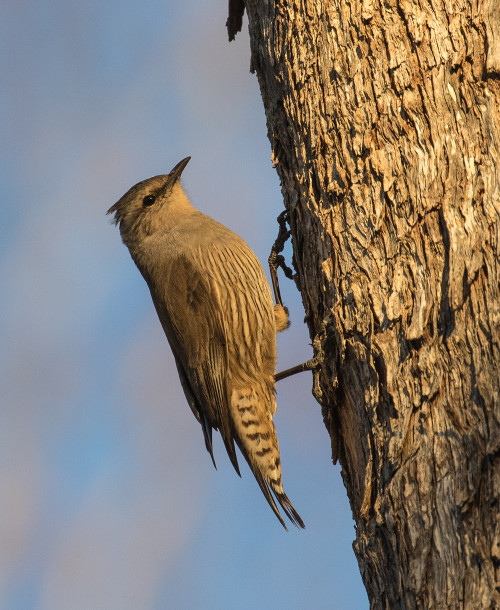The Feathered Five
Introducing the “Feathered Five”!
In 2013, Connecting Country developed a detailed 10-year Woodland Birds Action Plan for the Mount Alexander region with the assistance of external experts.
This plan identified five focal species that we have dubbed ‘the feathered five’. The ‘feathered five’ are ground-foraging woodland birds known to occur in the local area; Diamond Firetail, Jacky Winter, Hooded Robin, Brown Treecreeper and Painted Button-quail.
The ‘feathered five’ have all been declining in number and range in recent years, and are listed as threatened, along with a number of other bird species, in a group known as the Temperate Woodland Bird Community.
Each of the feathered five have been selected because they are:
- easily identified
- reasonably wide spread across the Mount Alexander region
- ground foraging birds are very susceptible to the pressures that are causing woodland birds to decline.
If we can keep track of and look after these five species, then we can assume the rest of them will be OK too! Some of the things that the birds are struggling with are: predation by foxes and cats, loss of leaf litter and branches, drought, and altered fire regimes.
How you can help
There are a number of ways to help these small woodland birds. Weed removal and supplementary planting will help their core habitat, and larger scale landcare projects that connect isolated patches of bush will help the birds move around the landscape. Keeping the bush area part of your property messy with lots of fallen timber, branches and leaf litter will help provide feeding areas and protection from predators. And finally – send in your sightings! Visit our record a sighting page to start contributing today.
A seed eating species that forages at ground level
Requires large areas of intact woodland habitat with scattered grassy open patches
An accessible and safe water source is also important
Nests in prickly wattles, mistletoe clumps or even nests of eagles and Whistling kites!
Forages for invertebrates on and near ground level
Nests in hollows within trees, stumps and sometimes old wooden fence-posts
Requires large areas of intact woodland habitat with a good cover of leaf litter, logs and fallen branches
Breeds cooperatively – young from previous years help the parents raise the young.
An insectivorous species, that forages on and near the ground in open areas. Prefers areas with a good cover of leaf litter, logs and other woody debris
Requires large areas of woodland in good condition with a connection to similar sites
Usually a quiet bird, this bird is known to call a lot on moonlit nights
Forages for insects in leaf litter, creating small circular patterns called platelets
The females are more brightly coloured – and she mates with several males who then raise the young!
Requires large areas of woodland in good condition with a connection to similar sites
Often found along the boundary between grassy paddocks and intact woodland habitat
Often seen sitting on fence posts or wire, hunting for insects by perching and then pouncing on the ground
Can be distinguished from other small grey birds by its white-lined tail that moves in a distinctive figure-of-eight ‘waggle’
Needs intact woodland with a sparse, open understorey






